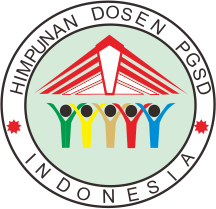Perception of Teachers and Students by Using Interactive Multimedia to Improve Science Literacy and Self-Efficacy
DOI:
https://doi.org/10.30595/dinamika.v12i2.5046Keywords:
science literacy, self-efficacy, interactive multimediaAbstract
The purpose of this study is to analyze and explain Perception of Teachers and Students by Using Interactive Multimedia to Improve Science Literacy and Self Efficacy. The research method was descriptive method.The population in this study were ten junior high school teachers and seventy five junior high school students from five different schools. The data collection used questionnaires and data analysis techniques using percentages. The results showed that the teachers perception of learning using interactive multimedia in the aspect of implementation was low category, because teachers still use books and students worksheet. Teachers perceptions of scientific literacy aspects are low, but teachers have tried to apply them in learning. Furthermore, teachers perceptions of students self efficacy in category “medium”. Students' perceptions for aspects of learning using Multimedia interactive (MMI) and scientific literacy were still low, but on aspect of students self efficacy in the “high” category. Then, the percentage of students requirements of using MMI in learning in “high” category. It can be concluded that using MMI to improve students sains literacy and students self efficacy.
References
[1] Arikunto, S. 2008. Dasar-Dasar Evaluasi Pendidikan. Bumi Aksara: Jakarta
[2] Bandura, A. 1997. Self Efficacy TheExercise of Control, W.H. Freeman and Company. New York
[3] Britner, S. L., & Pajares, F. 2006. Sources of science self‐efficacy beliefs of middle school students. Journal of Research in Science Teaching, 43(5), 485-499.
[4] Dharma. 2012. Pengembangan Media Pembelajaran Multimedia Interaktif Untuk Meningkatkan Minat dan Hasil Belajar Peserta didik (Studi Pengembangan di SMP Pasundan 1 Bandung). Tesis. Pendidikan Kewarganegaraan, Universitas Pendidikan Indonesia.
[5] Fitriyah. 2017. Pengaruh Model Pembelajaran Discovery Learning Terhada Hasil Belajar Matematika Siswa SMA MAN Model Kota Jambi. STKIP PGRI Sumatra Barat. Jambi
[6] Isnadini, W., & Rasmawan, R. 2014. Pemberian Corrective Feedback Disertai Reward Terhadap Efikasi Diri Dan Hasil Belajar Kimia Di Sma. Jurnal Pendidikan dan Pembelajaran, 3(8).
[7] Kemendikbud. 2016. Panduan penilaian oleh pendidik dan satuan pendidikan untuk Sekolah Menengah Atas. Jakarta: Kemendikbud.
[8] Komarraju, M., & Nadler, D. 2013. Self-efficacy and academic achievement: Why do implicit beliefs, goals, and effort regulation matter?. Learning and Individual Differences, 25, 67-72.
[9] Lederman, N. G. , J. S. Lederman dan A. Antink. 2013. Nature of science and scientific inquiry as contexts for the learning of science and achievement of scientific literacy. International Journal of Education in Mathematics, Science and Technology. Vol. 1, Pp 138- 147. Tersedia di http://files.eric.ed.gov/fulltext/ED543992.pdf. Pada tanggal 30 Oktober 2015, 10:30 WIB. 9 hlm.
[10] Selwyn, neil. 2011. Education and Technology Key Issues and Debats. India : Replika press Pvt Ltd.
[11] Sudjana, N. 2005. Metode Statistika. Transito. Bandung
[12] Tuan, H. L, Chin, C. C & Shieh, S.H. 2005. The developmentof a questionnaire to measure students’ motivation towards science learning. International Journal od Science Education, 27(6), 639-654
[13] Van Dinther, M., Dochy, F., & Segers, M. 2011. Factors affecting students’ self-efficacy in higher education. Educational Research Review, 6(2), 95-108
[14] Yusrizal. 2008. Penggunaan multimedia dalam pembelajaran untuk meningkatkan hasil belajar siswa. Tesis pada SPS UPI Bandung: Tidak diterbitkan
Published
How to Cite
Issue
Section
License
Authors who publish with this journal agree to the following terms:
Authors retain copyright and grant the journal right of first publication with the work simultaneously licensed under a Creative Commons Attribution License that allows others to share the work with an acknowledgement of the work's authorship and initial publication in this journal.
Authors are able to enter into separate, additional contractual arrangements for the non-exclusive distribution of the journal's published version of the work (e.g., post it to an institutional repository or publish it in a book), with an acknowledgement of its initial publication in this journal.
Authors are permitted and encouraged to post their work online (e.g., in institutional repositories or on their website) prior to and during the submission process, as it can lead to productive exchanges, as well as earlier and greater citation of published work (See The Effect of Open Access).

Dinamika Jurnal Ilmiah Pendidikan Dasar is licensed under a Creative Commons Attribution 4.0 International License.













